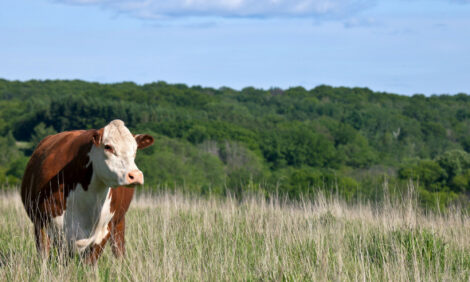



Breakthrough In Bluetongue Vaccine
GENERAL - Researchers funded by the Biotechnology and Biological Sciences Research Council (BBSRC) have taken a step towards producing better vaccines against Bluetongue - an important disease of livestock - after successfully assembling the virus outside a cell.This research, published yesterday (1 August 2011) in the journal Proceedings of the National Academy of Sciences, could provide scientists with the tools to develop vaccines with useful new properties.
Professor Polly Roy of London School of Hygiene and Tropical Medicine, who led the team, explains: "We've developed the tools and provided the instruction manual for developing new, more effective Bluetongue vaccines. This will not only be useful for combating Bluetongue but will provide insights into fundamental virus assembly that will be useful for producing vaccines for other viruses."
Better vaccines will be important to help combat the threat that Bluetongue poses to livestock farming in the UK and abroad. Bluetongue is a viral disease of cows and sheep that is transmitted by biting midges. Historically it has mainly affected African farms, but since 1998 the disease has been spreading across Europe. In 2007 one strain of the disease reached as far as the east coast of the UK. The disease is economically devastating and kills up to 70 per cent of the sheep it infects.
Professor Roy continues: "Bluetongue is an important virus to study because it poses such a threat to livestock farming, but it presents some considerable scientific challenges. By virus standards Bluetongue is quite architecturally complex and it has a relatively difficult genome to work with, so assembling it in a test tube was a significant challenge. No one had been able to get such a complicated virus to assemble outside a cell before."
Professor Roy and her team synthesised each of the virus's gene and protein building blocks separately and then combined them in the right order in order to produce a functional virus particle. Then, to check whether they had been successful, they infected some midge cells with the newly synthesized virus.
Professor Roy continues: "When we injected the virus particles that we had assembled in the test tube into some midge cells they started behaving and replicating just as we would expect a wild virus to do. This was a really exciting moment. What had previously been a complex of proteins and other molecules whirred into activity and started making copies of itself."
Currently, Bluetongue vaccines are produced by chemical treatment of virulent viruses to inactivate them. These vaccines are effective at preventing the disease, but because it is difficult to tell the difference between animals that have been vaccinated from those that have recovered from an infection. This makes controlling outbreaks much more difficult.
This new approach provides an assembly kit for the virus which could allow scientists to design vaccines with useful properties. Developing a vaccine that is tagged with a marker, for example, would make it easier to tell the difference between animals that have been vaccinated and those that have suffered the disease.
Professor Douglas Kell, Biotechnology and Biological Sciences Research Council (BBSRC) Chief Executive, said: "This is an exciting development and offers great potential for future vaccine development. Using the tools of synthetic biology, we are now able to assemble viruses piece by piece in a way that gives us far greater understanding of how they work. This approach could allow us to make safer and more effective vaccines against a range of viral diseases.
"However, whilst these technologies have great potential benefits we must ensure that scientists are mindful of the wider social and ethical implications of their work. In June 2010 BBSRC published the findings of a Synthetic Biology Dialogue which was carried out in partnership with the Engineering and Physical Sciences Research Council. The dialogue explored people's attitudes towards Synthetic Biology and their hopes and aspirations for the technology and will be used to inform science policy governing this new field."
TheCattleSite News Desk


